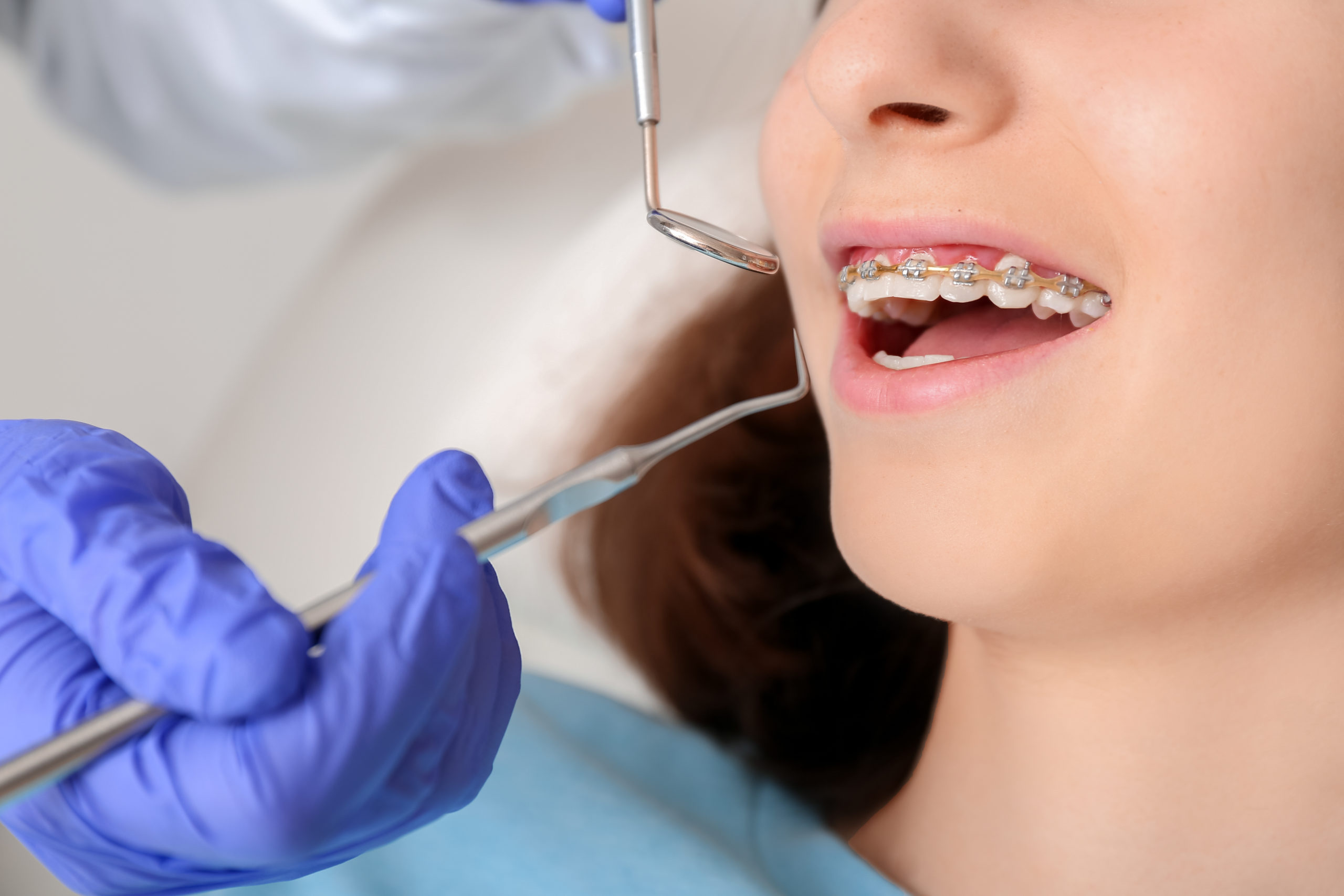Top Tips for Choosing the Best Cumming Orthodontist for Braces and Aligners
Top Tips for Choosing the Best Cumming Orthodontist for Braces and Aligners
Blog Article
Comprehensive Overview to Orthodontics Procedures for Fixing Dental Misalignments
In the realm of orthodontics, the journey to attaining a flawlessly aligned smile involves a myriad of treatments tailored to remedy dental misalignments. From standard braces to invisible aligners and even medical alternatives, the field of orthodontics provides an array of solutions to address differing degrees of dental abnormalities. Comprehending the intricacies of each treatment, including their devices, benefits, and possible downsides, is crucial in making informed choices concerning one's orthodontic treatment. As we navigate via the extensive overview to orthodontic procedures for remedying oral misalignments, the intricate information of each approach will certainly unfold, dropping light on the course towards a practical and harmonious oral placement.
Orthodontic Procedures Review

Regular modifications and tracking are essential components of orthodontic treatment to ensure progress is on track and to make any essential adjustments along the means. By undergoing orthodontic treatments, patients can not just accomplish a straighter smile but additionally enhance their overall dental health and wellness and function.
Conventional Braces: How They Function
When considering orthodontic therapies for dental imbalances, conventional dental braces stand apart as a tried and true approach for fixing teeth placing. Typical dental braces contain braces, cords, and bands that collaborate to use continual pressure on the teeth, gradually relocating them into the preferred placement. The braces are affixed to the teeth using an unique adhesive, and the cables are threaded with the brackets. By readjusting the stress of the cables, orthodontists can control the instructions and pressure related to each tooth, assisting them into appropriate positioning gradually.
One secret aspect of how standard dental braces job is the procedure of bone remodeling. As pressure is used to the teeth with the dental braces, the bone bordering the teeth is improved to support the new tooth placements. This renovation is vital for the long-lasting security of the remedied placement. Individuals will certainly require normal modifications at the orthodontist's workplace to ensure the braces proceed to apply the correct stress for reliable teeth activity.
Undetectable Aligners: Cons and pros
Invisible aligners provide a discreet and hassle-free choice to typical dental braces for correcting oral imbalances. These clear, personalized trays are virtually unseen when worn, making them an enticing option for individuals looking for a more visually pleasing orthodontic therapy. Among the key benefits of undetectable aligners is their removability, enabling for simpler maintenance of oral health compared to traditional dental braces. Individuals can eliminate the aligners prior to consuming or brushing their teeth, minimizing the risk of food obtaining embeded the home appliance and streamlining the cleaning process.

Surgical Orthodontic Options
Surgical interventions in orthodontics existing feasible choices for addressing complex dental misalignments that might not be properly settled via conventional orthodontic treatments. While standard dental braces and undetectable aligners can remedy many orthodontic concerns, particular situations call for surgical treatment to achieve optimum outcomes. Surgical orthodontic options are generally suggested for serious malocclusions, considerable jaw discrepancies, and instances where the underlying bone structure requires alteration to achieve correct positioning.
One common surgical orthodontic treatment is orthognathic surgery, which includes rearranging the jaws to fix useful concerns such as difficulty chewing or speaking. This surgery is commonly executed in partnership with an orthodontist that assists line up the teeth prior to and after the procedure. Surgical orthodontics may likewise include treatments to expose influenced teeth, eliminate excess gum tissue, or reshape the jawbone to produce an extra harmonious face profile.
Prior to considering medical orthodontic alternatives, individuals undergo a thorough assessment to figure out the necessity and prospective advantages of such treatments. braces. While surgical procedure might appear daunting, it can significantly enhance both the function and looks of the smile in cases where conventional orthodontic treatments fail
Retainers and Post-Treatment Care

Post-treatment care entails following the orthodontist's instructions carefully. This may consist of appropriate dental hygiene practices, attending follow-up appointments, and putting on the retainers as prescribed. Failure to abide with post-treatment care guidelines can lead to regression, where the teeth slowly relocate back in the direction of their initial placements. Consistent retainer wear, great dental health, and routine oral examinations are necessary for maintaining the outcomes accomplished with orthodontic surgical treatment and ensuring the long-lasting security of the fixed dental placement.
Final Thought
To conclude, orthodontic procedures offer different options for remedying oral imbalances. Standard braces make use of steel braces and cords to move teeth into proper alignment. Undetectable aligners provide a more discreet choice but may not be appropriate for all situations. Surgical orthodontic choices are offered for extra extreme imbalances. Retainers are typically made use of post-treatment to keep the new alignment. Generally, orthodontic treatments can efficiently emergency dental office improve dental wellness and aesthetic look.
As we navigate through the comprehensive overview to orthodontic treatments for remedying dental misalignments, the complex information of each approach will certainly unravel, losing light on the course towards a harmonious and functional dental the dental clinic positioning. - cumming orthodontist
One of the most common orthodontic treatments is the usage of dental braces, which consist of steel brackets and cables that apply mild pressure to gradually move teeth into the desired position.When thinking about orthodontic treatments for dental misalignments, conventional braces stand out as a tried and true method for fixing teeth positioning. Furthermore, invisible aligners may not be suitable for complex orthodontic problems that require more substantial teeth movement, as they are normally recommended for mild to moderate cases. Retainers are custom-made orthodontic gadgets created to hold teeth in their remedied placements after the conclusion of orthodontic therapy.
Report this page